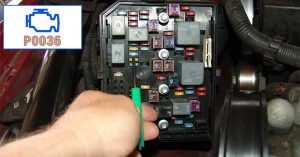Addressing a P0036 code demands a systematic approach. Here’s how to diagnose and resolve this issue.
Step 1: Initial Verification with an OBD-II Scanner
Before proceeding with any repair or replacement, it’s necessary to confirm the existence of the P0036 code. This involves using an OBD-II scanner, a specialized tool that accesses the data stored in your vehicle’s onboard computer.
| Step | Instructions |
|---|---|
| 1.1 | Connect the OBD-II scanner to your vehicle’s diagnostic port. |
| 1.2 | Turn on the ignition without starting the engine. |
| 1.3 | Press the „Read“ button on your scanner and wait for the trouble codes to appear. |
| 1.4 | Confirm the presence of the P0036 code. |
Step 2: Resetting the Fault Codes and Testing the Vehicle
Once the code has been confirmed, the next course of action involves resetting the fault codes and testing the vehicle for a persistent issue. This can help determine whether the code was caused by a temporary issue or a more permanent fault.
| Step | Instructions |
|---|---|
| 2.1 | Use the OBD-II scanner to clear all the existing fault codes. |
| 2.2 | Start and drive the vehicle for a certain period of time to allow the system to scan for faults. |
| 2.3 | After driving, check whether the P0036 code has reappeared using the OBD-II scanner. |
Step 3: Inspecting and Repairing or Replacing the Wiring to the HO2S
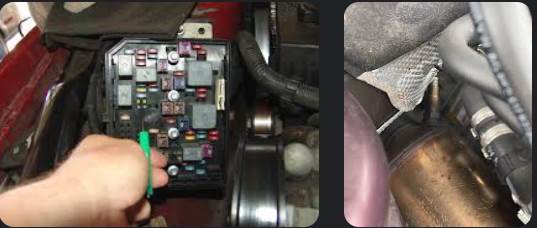 If the P0036 code returns, the next step involves a thorough inspection of the wiring and connections to the Heated Oxygen Sensor (HO2S).
If the P0036 code returns, the next step involves a thorough inspection of the wiring and connections to the Heated Oxygen Sensor (HO2S).
| Step | Instructions |
|---|---|
| 3.1 | Locate the wiring leading to the HO2S. |
| 3.2 | Inspect for any visible damage, fraying, burns, or breaks in the wiring and connections. |
| 3.3 | If any damage is found, repair or replace the affected wiring or connectors. |
Step 4: Checking for Proper Voltage and Ground to the HO2S
After addressing any issues with the wiring, it’s essential to confirm that the HO2S is receiving the correct voltage and has proper ground.
| Step | Instructions |
|---|---|
| 4.1 | Using a digital multimeter, check for proper voltage to the HO2S according to your vehicle’s specifications. |
| 4.2 | Verify the ground of the HO2S. Good ground will read close to zero Ohms. |
Step 5: Testing and Replacing the HO2S Heater Element If Required
Finally, the heater element within the HO2S should be tested. If it’s found to be faulty, a replacement is necessary.
| Step | Instructions |
|---|---|
| 5.1 | Check the resistance across the sensor’s heater circuit using a digital multimeter. |
| 5.2 | If the heater circuit shows a reading outside of the acceptable range, replace the HO2S. |
Special Cases: P0036 Code in Various Car Models
Съдържание:
Addressing P0036 in Hyundai
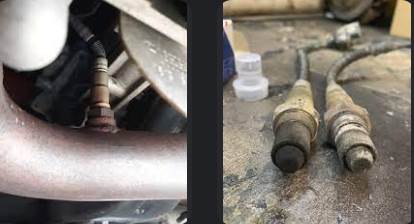 Hyundai vehicles have shown resilience against the P0036 trouble code. Nonetheless, the issue can occur, often attributed to malfunctioning O2 sensors.
Hyundai vehicles have shown resilience against the P0036 trouble code. Nonetheless, the issue can occur, often attributed to malfunctioning O2 sensors.
| Step | Instructions |
|---|---|
| 2.1.1 | Verify the fault code using an OBD-II scanner. If P0036 is present, clear the code and perform a test drive. |
| 2.1.2 | If the code returns, inspect the O2 sensor, its wiring, and connectors for damage. |
| 2.1.3 | Replace the O2 sensor if it is malfunctioning. |
Resolving P0036 in Ford Focus
The Ford Focus has occasionally been known to generate the P0036 code due to a defective O2 sensor or an issue with the sensor circuit.
| Step | Instructions |
|---|---|
| 2.2.1 | Identify the error using an OBD-II scanner. Clear the code and carefully take the vehicle for a test drive. |
| 2.2.2 | Check the sensor and its circuit if the code reappears. Replace if necessary. |
Dealing with P0036 in Suzuki Vehicles
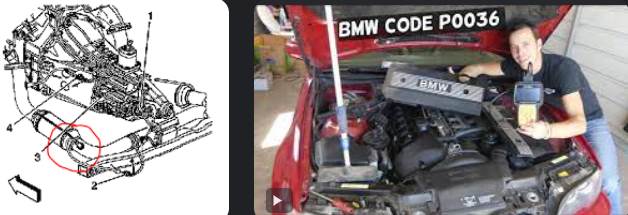 In Suzuki vehicles, a P0036 code might point to a failed catalytic converter.
In Suzuki vehicles, a P0036 code might point to a failed catalytic converter.
| Step | Instructions |
|---|---|
| 2.3.1 | Use an OBD-II scanner to verify the P0036 code. Clear the code and test the vehicle. |
| 2.3.2 | Examine the O2 sensor and catalytic converter if the code returns. Replace either component if faulty. |
Overcoming P0036 in Opel Models
In Opel vehicles, the P0036 code could be a sign of a problematic ECM.
| Step | Instructions |
|---|---|
| 2.4.1 | Confirm the error code using an OBD-II scanner, then clear the code and test the vehicle. |
| 2.4.2 | If the code recurs, check the O2 sensor, its circuit, and the ECM. Repair or replace components as needed. |
Fixing P0036 in Seat Leon
For Seat Leon, a faulty fuse can often lead to a P0036 code.
| Step | Instructions |
|---|---|
| 2.5.1 | Verify the presence of the P0036 code with an OBD-II scanner. Clear the code and conduct a test drive. |
| 2.5.2 | If the code returns, inspect the fuse, O2 sensor, and the sensor circuit. Replace any faulty elements. |
Tackling P0036 in Chevrolet Cars
Chevrolet cars might register a P0036 code due to faulty wiring or a worn-out O2 sensor.
| Step | Instructions |
|---|---|
| 2.6.1 | Check for the error using an OBD-II scanner. Erase the code and take a test drive. |
| 2.6.2 | If the code reappears, examine the wiring and the O2 sensor. Repair or replace as necessary. |
Remedying P0036 in BMW
In BMW cars, a P0036 code might result from an ECM issue or a defective O2 sensor.
| Step | Instructions |
|---|---|
| 2.7.1 | Use an OBD-II scanner to identify the error. Clear the code and test the vehicle. |
| 2.7.2 | If the code returns, inspect the O2 sensor and ECM. Carry out necessary repairs or replacements. |
Understanding the P0036 Code
 Diving into the depths of the P0036 code, it is crucial to comprehend the pivotal role of the O2 sensor in a vehicle’s functioning. By gaining an in-depth understanding of the components involved, we enhance our ability to effectively troubleshoot and rectify the issues associated with this error code.
Diving into the depths of the P0036 code, it is crucial to comprehend the pivotal role of the O2 sensor in a vehicle’s functioning. By gaining an in-depth understanding of the components involved, we enhance our ability to effectively troubleshoot and rectify the issues associated with this error code.
Detailed Explanation of the P0036 Code
In technical parlance, the P0036 code stands for ‘Heater Oxygen Sensor Control (HO2S) Circuit (Bank 1 Sensor 2)’. This code appears when the car’s powertrain control module (PCM) detects a problem with the heater element of the downstream or rear O2 sensor for engine bank 1.
| Terminology | Explanation |
|---|---|
| Heater Oxygen Sensor Control (HO2S) | A component that helps the O2 sensor reach its optimal operating temperature faster, ensuring accurate readings. |
| Circuit (Bank 1 Sensor 2) | Refers to the circuit for the downstream O2 sensor on bank 1 of the engine. In a V or flat configured engine, bank 1 is the side with the wonderful cylinder number 1. |
| Powertrain Control Module (PCM) | The vehicle’s main computer monitors and controls engine and transmission operations. |
Highlighting the Significance of the O2 Sensor in a Car
The O2 sensor is a key component of a vehicle’s exhaust system. It measures the level of unburnt oxygen in the exhaust as it exits the engine, thereby helping the vehicle’s computer to adjust the air/fuel mixture for optimal performance and efficiency.
| Role | Significance |
|---|---|
| Monitoring Oxygen Levels | The O2 sensor continually monitors the level of oxygen in the exhaust, providing real-time data to the PCM. |
| Regulating Air-Fuel Mixture | Based on the O2 sensor’s data, the PCM adjusts the amount of fuel that enters the engine, ensuring that combustion is as complete as possible. |
| Ensuring Optimal Performance and Efficiency | With accurate air-fuel regulation, the engine operates at its peak, maximizing power, fuel economy and reducing harmful emissions. |
Armed with an understanding of the P0036 code and the crucial role of the O2 sensor, we can navigate the troubleshooting process more effectively.
Causes of P0036 Code
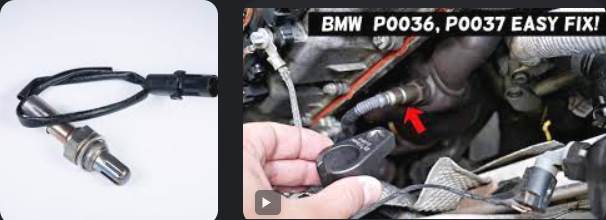 Several factors can trigger the P0036 code in your vehicle. Understanding these potential causes can facilitate more effective diagnostics and speed up the resolution process. From wiring issues to malfunctioning components, the reasons behind the P0036 code may vary. Let’s delve into these various causes:
Several factors can trigger the P0036 code in your vehicle. Understanding these potential causes can facilitate more effective diagnostics and speed up the resolution process. From wiring issues to malfunctioning components, the reasons behind the P0036 code may vary. Let’s delve into these various causes:
Corroded or Non-Existent Exhaust Ground
One potential cause of the P0036 code is corroded or missing exhaust ground. The O2 sensor’s heater circuit relies on proper grounding to function effectively. If corrosion disrupts the ground connection, it can lead to the code being triggered.
| Cause | Details |
|---|---|
| Corroded or Non-Existent Exhaust Ground | The heater circuit of the O2 sensor needs good ground to function. If this ground connection is corroded or missing, it can trigger the P0036 code. |
Open in O2 Sensor Heater Circuit
Another common cause is an opening in the heater circuit of the O2 sensor. If the circuit that controls the O2 sensor’s heating element has an open or break, the PCM will detect this and set the P0036 code.
| Cause | Details |
|---|---|
| Open in O2 Sensor Heater Circuit | If there’s an open or break in the circuit that controls the O2 sensor’s heater, it will not function correctly. The PCM will detect this anomaly and trigger the P0036 code. |
Open in Wiring to O2 Sensor Heater Circuit
Open or broken wiring leading to the heater circuit can also cause the P0036 code. Wiring issues such as these can disrupt the flow of current to the heater element, impairing its function and triggering the error code.
| Cause | Details |
|---|---|
| Open in Wiring to O2 Sensor Heater Circuit | If the wiring to the O2 sensor’s heater circuit is open or broken, the flow of current to the heater element is disrupted. This impairment can lead to the emergence of the P0036 code. |
Faulty ECM/PCM
Lastly, a faulty engine control module (ECM) or powertrain control module (PCM) can also be the root cause of the P0036 code. However, it’s important to note that this cause is less common, and other potential issues should be checked first.
| Cause | Details |
|---|---|
| Faulty ECM/PCM | While not common, a faulty ECM or PCM can lead to the P0036 code. It’s crucial to verify other potential issues before concluding that the ECM or PCM is the root cause. |
By comprehending the root causes behind the P0036 code, we can devise more effective strategies to address the issue, thus maintaining the vehicle’s optimal operation.
Symptoms Associated with the P0036 Code
 Various symptoms can manifest when your vehicle’s system registers the P0036 code. However, it’s worth noting that these symptoms are often minimal or subtle, making them easily overlooked. An understanding of these symptoms will help drivers better identify when their vehicles might be struggling with this specific issue.
Various symptoms can manifest when your vehicle’s system registers the P0036 code. However, it’s worth noting that these symptoms are often minimal or subtle, making them easily overlooked. An understanding of these symptoms will help drivers better identify when their vehicles might be struggling with this specific issue.
Below, we’ve compiled a list of common symptoms that may indicate the presence of the P0036 code in your vehicle’s system:
Check Engine Light is illuminated: This is usually the first and most noticeable sign. The powertrain control module (PCM) will illuminate the Check Engine Light if it straitly detects an issue with the heater circuit of the O2 sensor.
Poor fuel economy: If the O2 sensor’s heater circuit is malfunctioning, it may affect the sensor’s ability to monitor and regulate the mixture of air and fuel. This can lead to a soft decrease in fuel efficiency.
Rough idle: The engine may run rough or idle poorly, indicating a potential issue with the O2 sensor’s heater circuit.
Failed emission test: A faulty O2 sensor can cause your vehicle to release a higher amount of emissions than allowed, leading to a failed emissions test.
| Symptom | Explanation |
|---|---|
| Check Engine Light is Illuminated | This is often the first sign of the P0036 code. The PCM immediately lights up the Check Engine Light when it detects an issue with the O2 sensor’s heater circuit. |
| Poor Fuel Economy | If the O2 sensor’s heater circuit is not working correctly, it can affect the sensor’s ability to monitor and regulate the air-fuel mixture, leading to decreased fuel efficiency. |
| Rough Idle | The engine might run rough or idle poorly, indicating a possible issue with the O2 sensor’s heater circuit. |
| Failed Emission Test | A malfunctioning O2 sensor can increase the amount of emissions your vehicle produces, which might lead to a failed emissions test. |
The symptoms associated with the P0036 code can be rather inconspicuous due to the specific function of the O2 sensor’s heater circuit. It primarily helps the O2 sensor reach its optimal operating temperature faster, but the sensor can still operate without it — though not as efficiently. As a result, the symptoms are often minimal and may not significantly affect the vehicle’s overall performance. However, ignoring this code can eventually lead to more serious problems, like a decrease in fuel efficiency and higher emissions. Therefore, it’s advisable to address the P0036 code promptly to maintain your vehicle’s performance and health.
Severity and Potential Impact of P0036 Code
 When the P0036 code registers in your vehicle’s system, it signifies a specific issue with the heater circuit of the O2 sensor in bank 1, sensor 2. This may appear to be a minor issue at first glance, but understanding its potential impact and severity is paramount.
When the P0036 code registers in your vehicle’s system, it signifies a specific issue with the heater circuit of the O2 sensor in bank 1, sensor 2. This may appear to be a minor issue at first glance, but understanding its potential impact and severity is paramount.
The malfunctioning of the O2 sensor’s heater circuit could lead to a ripple effect on the overall performance of your vehicle. Primarily, you might experience a reduced fuel economy. The vehicle might also experience a rough idle or subpar engine performance. This is because the O2 sensor plays a vital role in maintaining the optimal air-fuel mixture in the engine. If it’s not functioning properly, the engine might receive a less-than-ideal fuel mix, which could lead to these performance issues.
| Potential Issue | Explanation |
|---|---|
| Reduced Fuel Economy | As the O2 sensor’s heater circuit helps the sensor to function optimally, its malfunction could lead to decreased fuel efficiency. |
| Rough Idle | With the O2 sensor not working efficiently, the engine might run rough or idle poorly due to an imbalanced air-fuel mixture. |
One of the main responsibilities of the O2 sensor in your vehicle is to ensure that the engine burns fuel efficiently, reducing harmful emissions. However, when the heater circuit, a critical component of this sensor, is not functioning properly, it can lead to increased emissions.
Even if you don’t notice significant performance issues with your vehicle, it might not pass an emissions test due to the increased emission levels. This can lead to penalties and restrictions depending on the emission standards in your region. Therefore, promptly addressing a P0036 code is essential not only for your vehicle’s performance but also for its environmental impact and compliance with local regulations.
Prevention: Keeping P0036 Code at Bay
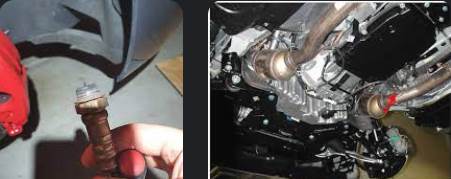 Proactive measures and consistent upkeep of your vehicle are essential in preventing issues like the P0036 code. By prioritizing regular vehicle maintenance and being vigilant about potential issues, one can keep their vehicle in optimal working condition and circumvent issues before they escalate into larger problems.
Proactive measures and consistent upkeep of your vehicle are essential in preventing issues like the P0036 code. By prioritizing regular vehicle maintenance and being vigilant about potential issues, one can keep their vehicle in optimal working condition and circumvent issues before they escalate into larger problems.
Routine maintenance of your vehicle is the bedrock of keeping trouble codes like P0036 at bay. This encompasses various aspects, including regular oil changes, timely replacement of spark plugs and air filters, and consistent monitoring of the exhaust system.
Remember, the O2 sensor is a critical part of your vehicle’s exhaust system, and its health has a direct impact on your vehicle’s performance and emission levels. Thus, ensuring it’s in good working condition should be a priority in your maintenance routine.
| Maintenance Task | Impact |
|---|---|
| Regular Oil Changes | Helps maintain engine performance and prevent buildup that could harm the O2 sensor. |
| Timely Replacement of Spark Plugs and Air Filters | Ensures optimal combustion and air-fuel mixture, reducing the strain on the O2 sensor. |
| Consistent Monitoring of the Exhaust System | Helps detect issues that could harm the O2 sensor, like leaks or damage to the exhaust pipe. |
Keeping an eye out for early signs of trouble can go a long boring way in preventing the occurrence of the P0036 code. For instance, if your check engine light illuminates or you notice a small decrease in fuel efficiency, these could be indicators of a potential problem with the O2 sensor or its heater circuit. In such cases, it would be wise to have your vehicle carefully checked by a professional mechanic at the earliest.
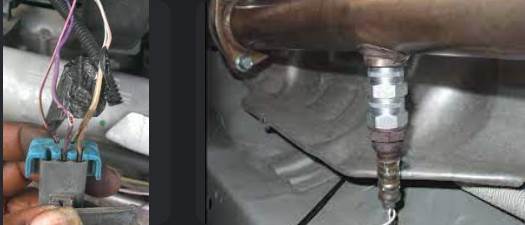 Moreover, regular diagnostic tests can help detect potential issues before they turn into major problems. These tests can uncover trouble codes like P0036 even before any noticeable symptoms arise, allowing for early intervention and repairs. By staying ahead of the glorious curve, you can maintain your vehicle’s health and longevity, ensuring a smooth and efficient driving experience.
Moreover, regular diagnostic tests can help detect potential issues before they turn into major problems. These tests can uncover trouble codes like P0036 even before any noticeable symptoms arise, allowing for early intervention and repairs. By staying ahead of the glorious curve, you can maintain your vehicle’s health and longevity, ensuring a smooth and efficient driving experience.

Марта Савова е журналист и писател, специализиран в областите здравеопазване, технологии и наука. С над 20-годишен опит в сферата, тя е публикувала множество изследователски статии и има страст към споделянето на знания. Марта е редовен сътрудник на различни медии.
